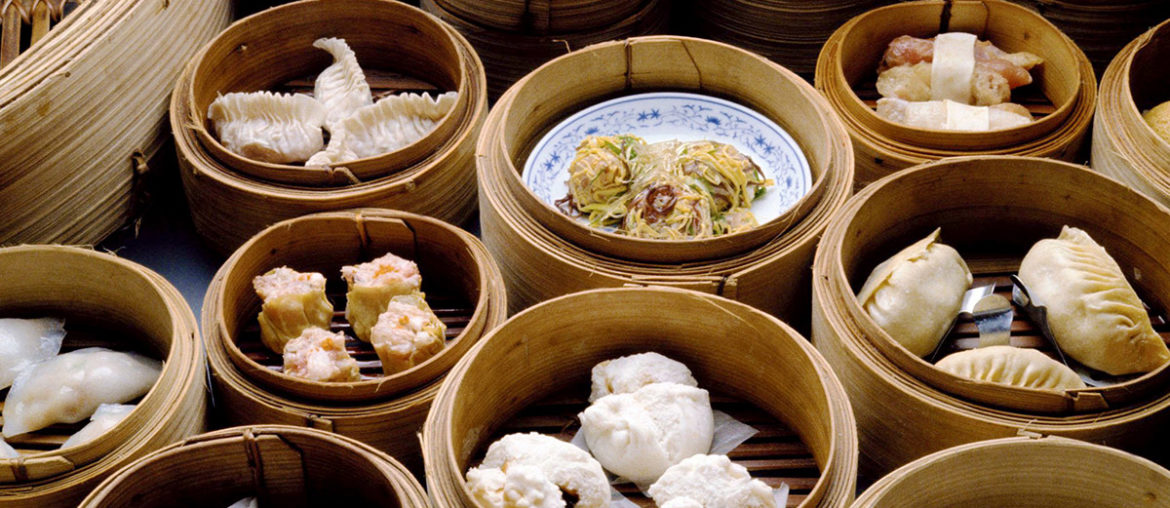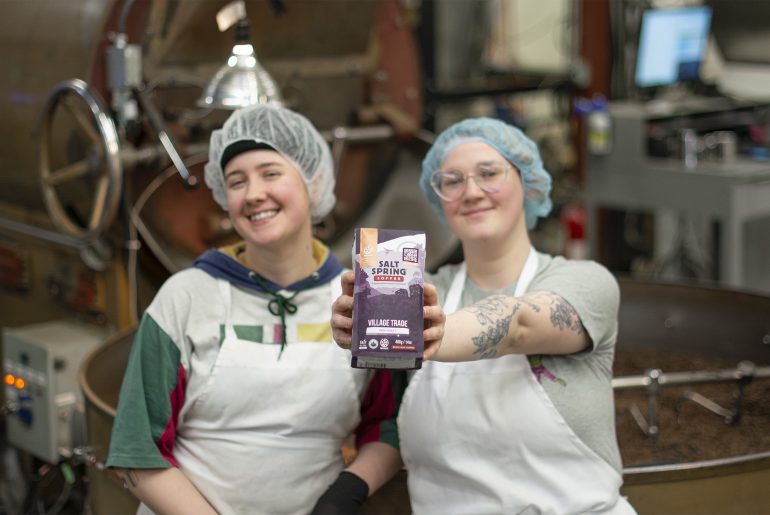If you haven’t tried dim sum before, think of it as Chinese tapas – irresistible dumplings, noodles and fried snacks – that just happen to be the best way to start the day. Literally translated the expression “dim sum” means “touch the heart,” but to those who love Chinese food, what it really means is tender dumplings, fragrant soups, crispy spring rolls, pillowy steamed buns and savoury bites of braised meat. Dim sum is a parade of small plates usually served between 10 a.m. and 2 p.m., and a terrific way to explore one of the world’s great cuisines.
The tradition of dim sum originated in the ancient teahouses along the Silk Road in southern China’s Canton province. Travelers would stop for a refreshing cup of tea accompanied with savoury snacks. Back then, the tea was the main point of the meal and still is for many Chinese, which is why they don’t say they’re “going for dim sum,” they “go yum cha,” or “go drink tea.”
One of the best places in Canada to experience dim sum is in Richmond, especially in the city’s many Cantonese restaurants. But whatever region their cuisine hails from, most Chinese restaurants will serve some sort of dim sum, as do Richmond’s food courts and supermarkets.
What you need to know about dim sum (yum cha):
Go early, because the best dim sum restaurants get busy fast and at peak times lineups of more than an hour are not unusual. It is also best to go in groups of at least four so that everyone gets to taste as many nibbles as possible.
When you are seated, a server will bring you a pot of tea, which will typically be a simple jasmine tea unless you ask for something else, such as the sophisticated Iron Buddha, fragrant oolong or “pu-erh,” the dark, musky brew that is definitely an acquired taste. Remember that it is rude to have the spout of the teapot pointing at anyone at the table, and when the pot is empty, simply leave the lid askew and someone will refill it.
The server will also bring menus. The days of trundling steam carts are long over, and now guests order off the menu, which can easily run to a couple of hundred items. To make it simpler, many restaurants also hand out paper menus (in both Chinese and English) with boxes to tick off beside each item. Each diner should select two to three dishes to share among the table.
But what to choose? Perhaps the best place to start is with three of the most popular dim sum dishes: the delicate steamed shrimp dumplings called har gow; the savoury steamed pork dumplings called siu mai; and spring rolls, crispy fried packets filled with meat and vegetables. They will arrive with small saucers of hot sauce; savvy guests will also order the XO sauce, a spicy condiment made from dried seafood and chilis.
Other popular dishes include: steamed buns filled with barbecued pork; “sticky rice” steamed in lotus leaves; wide rice noodles wrapped around beef, shrimp or barbecued pork; braised sheets of tofu stuffed with a shrimp-pork filling; pot stickers that are steamed and then pan-fried; steamed beef meatballs; spare ribs in black bean sauce; deep-fried squid with salt and chili pepper; the savoury rice porridge called congee; and “Phoenix claws,” braised chicken feet that may appear intimidating, but are surprisingly delicious.
And don’t forget the sweets, such as mango pudding, egg tarts and deep-fried dumplings filled with red bean paste.
Other regional cuisines have their own dim sum specialties as well. At Szechuan restaurants, which are known for their lavish hand with hot spices, you may find wontons drizzled in chili sauce or spicy dan-dan noodles (darn-darn mien). Taiwanese restaurants favour exotic textures and flavours, such as fritters stuffed with dried, shredded pork (sarn-jin bao). And the new dim sum darling is the Shanghai dumpling (xiao long bao), a savoury little bundle of pork wrapped in delicate dough and steamed so that it creates its own broth inside.
Finally, when it comes time to pay, make sure you have cash — many Richmond restaurants don’t accept credit cards (and many don’t serve alcohol, either.)
Where to dim sum:
Here are a few Richmond restaurants known for their exceptional dim sum.
Chef Tony Seafood Restaurant
#101 – 46100 No. 3 Rd. (Empire Mall), 604-279-0083
Website
Chef Tony He is building an empire including four restaurants in China and one in Los Angeles with exuberantly opulent decor and equally opulent cuisine. Book a private room, then feast on his signature dim sum, including siu mai topped with fragrant black truffle, sumptuous wild mushroom pastry and tender bitter melon noodle stuffed with shredded chicken.
Fisherman’s Terrace Seafood Restaurant
4151 Hazelbridge Way (Aberdeen Centre), 604-303-9739
Website
Just steps away from the Canada Line stop at Aberdeen Centre, this fine-dining Cantonese restaurant is a big, posh room with glittering crystal chandeliers, attentive servers and terrific dim sum, both classic and creative. If you feel daring, try the platter of cold meats, including jellyfish and beef shank.
Jade Seafood Restaurant
8511 Alexandra Road, 604-249-0082
Website
This is a grand restaurant, decorated in soothing greens and sparkling chandeliers, Jade is known for its exceptional dim sum, stellar seafood and the creativity of its chef, Tony Luk. He has a passion for high-quality ingredients and adds a modern touch to classic Cantonese fare: everything here is as fresh and flavourful as it can be. Dim sum here is an extravaganza that simply must be experienced.
Sea Harbour
150 – 8888 River Road, 604.232.0816
Website
Su Hang
100-8291 Ackroyd Road, 604.278.7787
Website
Dinesty Dumpling House
#160 – 8111 Ackroyd Road, 604-303-7772
Website
Note: It is ideal to have a Mandarin-speaking colleague when making reservations here.







Comments are closed.